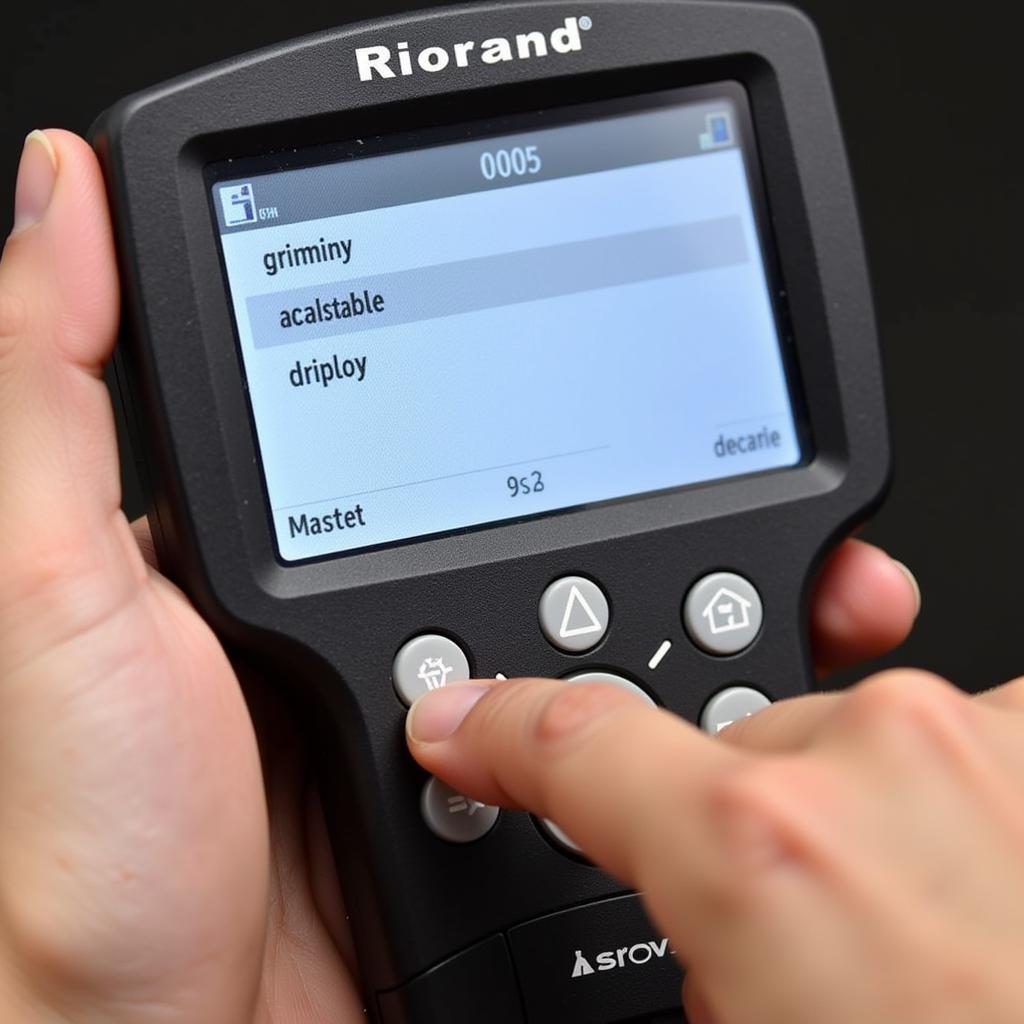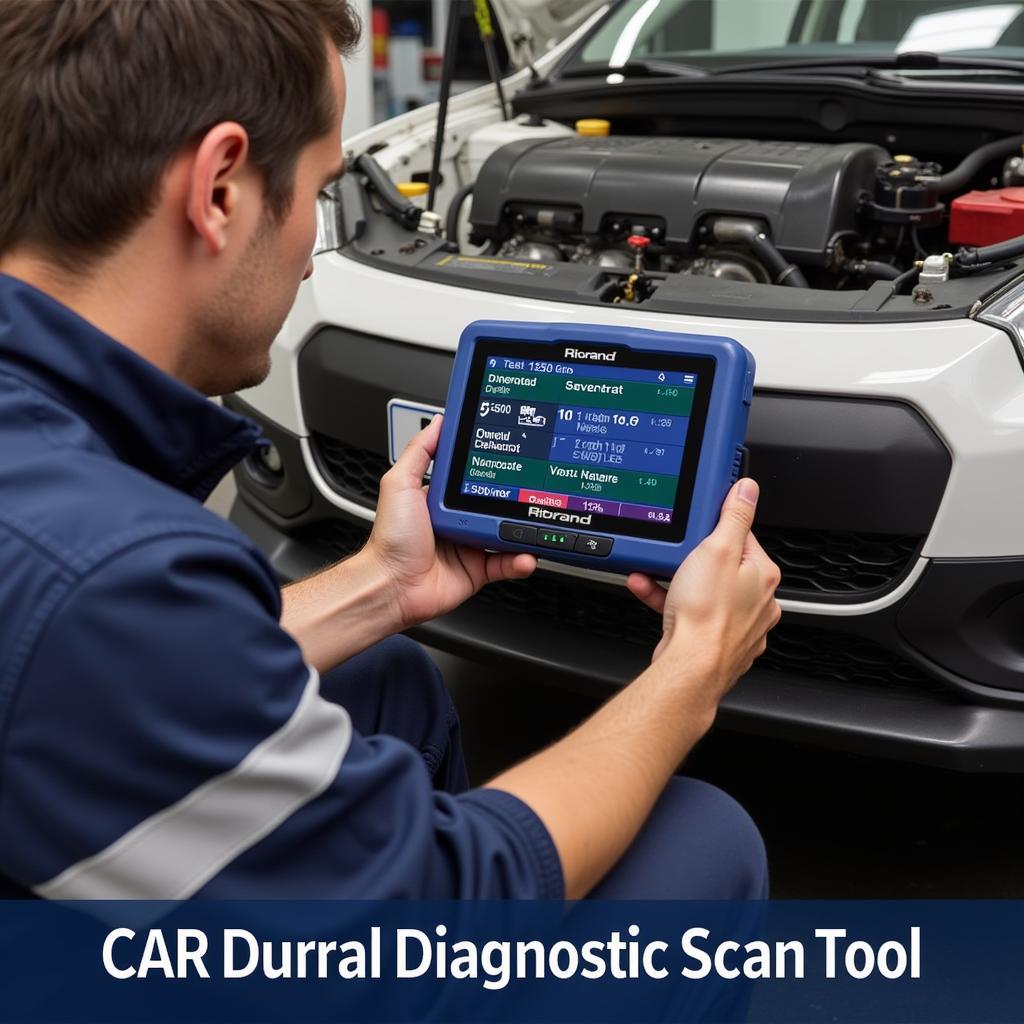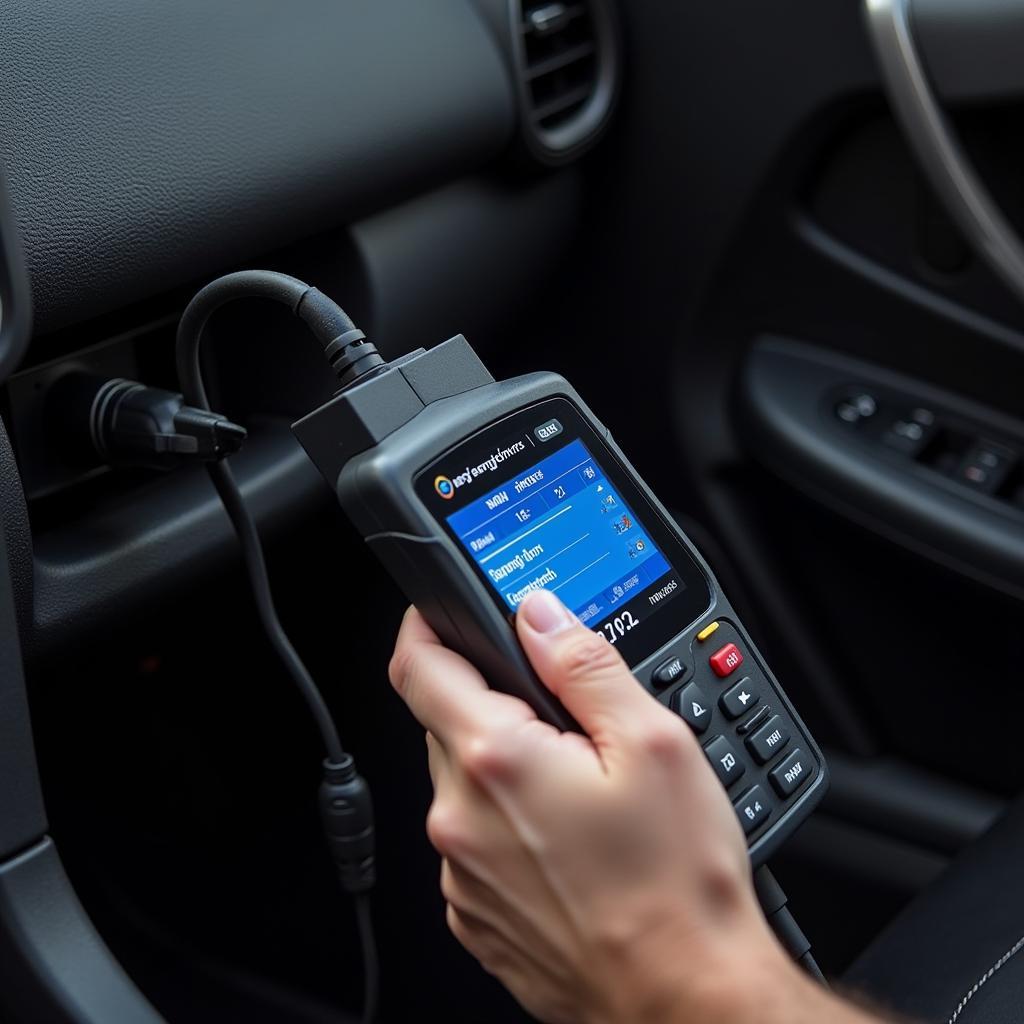The Riorand RS300 scan tool is a powerful and affordable solution for diagnosing car problems in OBDII/OBD2 vehicles. Whether you’re a car enthusiast, a DIY mechanic, or a professional technician, this comprehensive guide will equip you with the knowledge and insights to maximize the capabilities of this versatile tool.
Understanding the Importance of OBDII/OBD2 and Diagnostic Scan Tools
Modern vehicles are equipped with sophisticated onboard computer systems that monitor various aspects of engine performance, emissions, and overall vehicle health. The OBDII (On-Board Diagnostics, Second Generation) interface acts as a communication gateway, allowing you to access a wealth of diagnostic information. This is where a diagnostic scan tool like the Riorand RS300 comes in.
A diagnostic scan tool, often referred to as an OBD2 scanner, serves as the bridge between your vehicle’s computer system and your understanding of its health. It allows you to:
- Retrieve Diagnostic Trouble Codes (DTCs): These codes are like your car’s way of telling you something is wrong. The Riorand RS300 can read and interpret these codes, pinpointing the source of the problem.
- Clear DTCs: After addressing the underlying issue, you can use the RS300 to clear the DTCs, resetting the system and ensuring the check engine light stays off.
- View Live Data Stream: Monitor real-time sensor readings, such as engine RPM, coolant temperature, oxygen sensor voltage, and more. This live data is invaluable for diagnosing intermittent issues or understanding how your engine is performing under various conditions.
Why Choose the Riorand RS300?
The Riorand RS300 stands out as an exceptional diagnostic scan tool due to its impressive array of features, user-friendly design, and affordability. Let’s explore what makes it an ideal choice:
Comprehensive OBDII/OBD2 Coverage:
- Supports all 10 OBDII test modes: This comprehensive coverage ensures compatibility with a wide range of vehicles and diagnostic functions.
- Works on most 1996 and newer US-based, 2001 and newer EU-based, and 2008 and newer Asian vehicles: Its broad compatibility makes it a versatile tool for various car makes and models.
User-Friendly Interface:
- Easy-to-read LCD display: The clear and concise display ensures that navigating through menus and interpreting data is effortless.
- Intuitive button layout: The well-organized buttons provide quick access to essential functions, making it easy to use even for beginners.
Advanced Features:
- Reads and clears manufacturer-specific codes: This feature provides a deeper level of diagnostics, going beyond generic OBDII codes.
- Supports multiple languages: The multilingual interface caters to a global audience, making it accessible to users worldwide.
- Free lifetime software updates: Stay up-to-date with the latest features and vehicle compatibility through regular software updates.
 Riorand RS300 Diagnostic Scan Tool
Riorand RS300 Diagnostic Scan Tool
How to Use the Riorand RS300 to Diagnose Car Problems
Using the Riorand RS300 is straightforward, even for those new to car diagnostics. Here’s a step-by-step guide to get you started:
- Locate the OBDII/OBD2 port: This port is typically found under the dashboard on the driver’s side.
- Connect the Riorand RS300: Plug the scanner’s cable into the OBDII port.
- Turn on the ignition: Turn the key to the “on” position without starting the engine.
- Select the vehicle’s make and model: The RS300 will usually auto-detect the vehicle, but you may need to input this information manually.
- Choose the desired function: Select from options like “Read Codes,” “Clear Codes,” or “Live Data.”
- Interpret the results: The RS300 will display relevant information, such as DTCs, their descriptions, and live data readings.
Common Car Problems the Riorand RS300 Can Help Diagnose
The Riorand RS300 can help identify a wide range of car problems, including:
- Check Engine Light: Diagnose the root cause of a illuminated check engine light, whether it’s a loose gas cap, a faulty oxygen sensor, or a more serious engine problem.
- Misfires: Detect misfires in specific cylinders, helping you pinpoint issues with spark plugs, ignition coils, or fuel injectors.
- Emissions Problems: Identify problems with the evaporative emissions system, catalytic converter, or other components that affect emissions.
- Sensor Failures: Diagnose failures in sensors such as the mass airflow sensor (MAF), throttle position sensor (TPS), or coolant temperature sensor (CTS).
 Mechanic Using Riorand RS300 Scan Tool
Mechanic Using Riorand RS300 Scan Tool
Tips for Effective Car Diagnostics with the Riorand RS300
- Consult the vehicle’s repair manual: While the RS300 provides valuable information, it’s crucial to refer to your vehicle’s specific repair manual for detailed troubleshooting procedures.
- Research DTCs thoroughly: Understanding the meaning and potential causes of DTCs is essential for accurate diagnosis. Online resources and forums can be helpful.
- Consider the context: When analyzing live data, take into account the vehicle’s operating conditions and driving history.
- Don’t hesitate to seek professional help: If you’re unsure about any aspect of diagnosis or repair, it’s always best to consult with a qualified mechanic.
“The Riorand RS300 is a game-changer for anyone who wants to take control of their car repairs. It’s like having a personal mechanic in your pocket!” – John S., Certified Mechanic
Conclusion
The Riorand RS300 diagnostic scan tool empowers car owners, DIY mechanics, and technicians with a powerful tool to demystify car problems. Its user-friendly design, comprehensive features, and affordability make it a valuable asset for anyone looking to diagnose and address car issues effectively.
If you have any questions or need assistance with your Riorand RS300, feel free to contact ScanToolUS at +1 (641) 206-8880. Our team of experts is here to help. You can also visit our office at 1615 S Laramie Ave, Cicero, IL 60804, USA.


Pingback: Best DIY Car Diagnostic Tool for Audi: Take Control of Your Repairs - Car Scan Tool